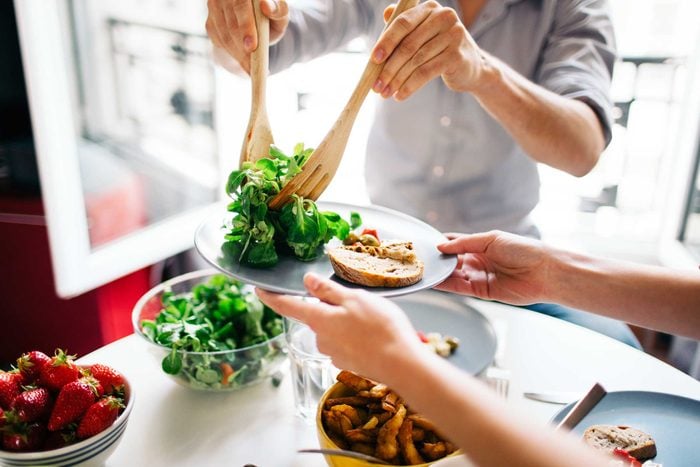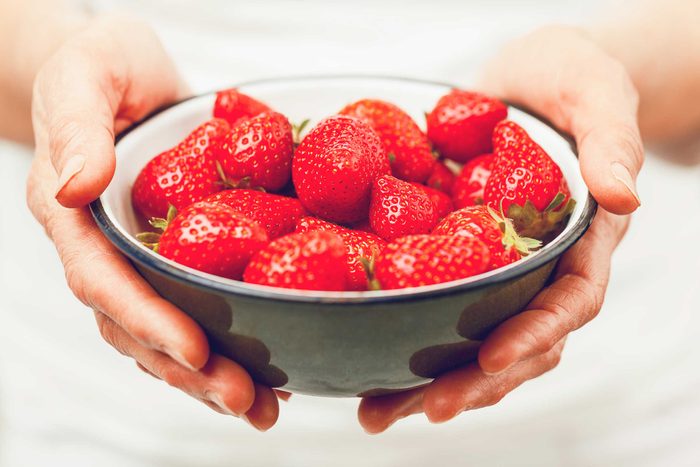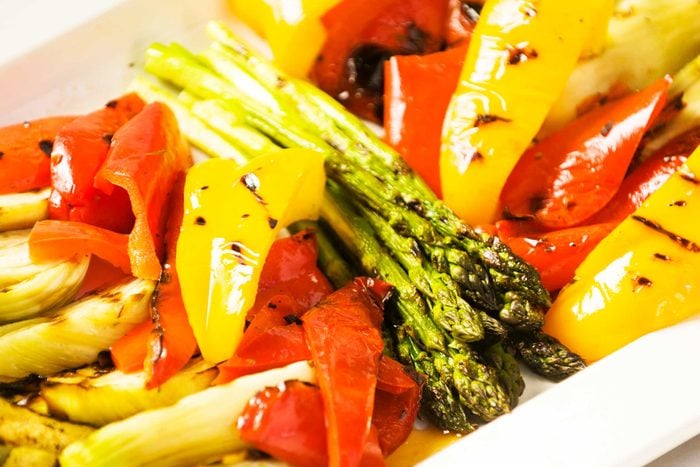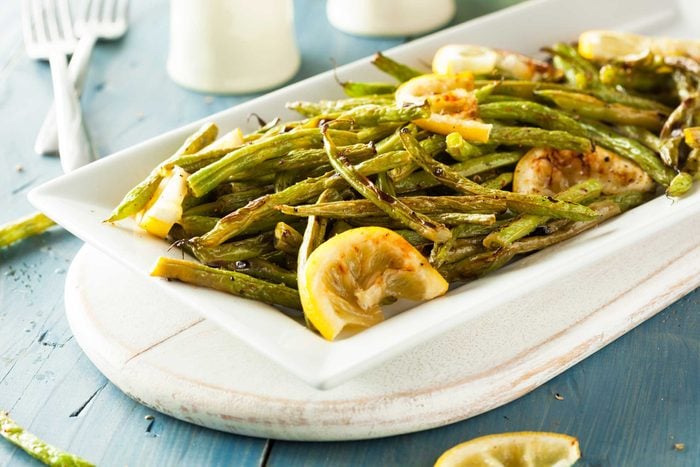How many veggies do you need to eat, anyway?
You may think you eat enough vegetables—but more than likely, you’re wrong. On average, Americans only get two servings of vegetables per day. The USDA’s Dietary Guidelines recommend adults eat anywhere from five to 13 servings of fruits and vegetables per day depending on age, gender, physical activity, and overall health. And those aren’t just numbers; skipping those key nutrients can seriously affect your overall health. Check out what happens to your body if you don’t get enough veggies. Read on to find out ways your body is telling you what it needs, and how to give it the nutrients it craves.

There’s a lack of color on your plate
“The typical American meal of meat and potatoes may taste good, but it isn’t very colorful or loaded with balanced nutrition,” says Abby Sauer, RD, MPH, a dietician at Abbott. “Even though they may be favorite foods, plain pasta, rice, and bread don’t add much color to your meals and don’t add much nutrition in terms of essential vitamins and minerals either.”

You’re bruising easily
Consuming too little vitamin C can increase your risk of bruising—some research suggests that getting enough through your diet can help. You can find vitamin C in red peppers, kale, red chili peppers, dark leafy vegetables, broccoli, Brussels sprouts, and tomatoes. Check out these vegetables (and fruits) that will keep cancer at bay.

You’re tired all the time
Deficiency in folate can cause fatigue and anemia, explains Sauer. This B vitamin can be found in asparagus, dark leafy greens, and starchy vegetables such as black-eyed peas, kidney beans, lima beans, navy beans, asparagus, and lentils.

That nagging cold won’t go away
“If you lack vegetables in your diet and the important vitamins they provide, your body may lack the defenses it needs to release free radical fighters against viruses,” says Sauer. “Stock your fridge with dark leafy green vegetables, an excellent source of vitamin C, to give your immune system a boost and help shorten your recovery time.”

Your memory is foggy
While occasional forgetfulness can affect all ages, if you find your brain’s processing speed and efficiency fading as you get older, a lack of nutrients could be the culprit. “Lutein, a nutrient which has been shown in early research to enhance learning and memory, can be found in a variety of vegetables such as leafy greens, carrots, broccoli, corn, and tomatoes,” says Sauer. “Adding a few or all of these vegetables to your weekly meals can provide a helpful and natural brain boost.”

Daily stressors are getting harder to handle
While stress is an inevitable part of life, how we eat and treat ourselves directly affects our body’s response. “Inflammation is your body’s natural response to stress, so if you’re not handling stress well, inflammation and its damaging effects could be taking place,” says Sauer. “Foods rich in anti-inflammatory compounds such as unsaturated fatty acids [like salmon and tuna], antioxidants, polyphenols and carotenoids [like green leafy vegetables and bright-colored peppers] can help lower the levels of inflammation in the body and increase your mental capabilities to handle life’s curveballs.” These are the best foods to eat when you’re stressed.

You’re prone to muscle cramps
Fruits and vegetables contain potassium that may prevent muscle cramps, especially if you’re exercising or outside in hot summer months, says Emily Rubin, RD, registered dietitian in the division of gastroenterology and hepatology at Thomas Jefferson University Hospitals. “One medium banana has 422 mg of potassium.”

Your scale won’t budge
“Fruits and vegetables have fiber that makes you feel full so you eat less,” says Rubin. “Most fruits and vegetables are low in calories. Fruit may also help with those sweet cravings. Choosing a bowl of strawberries instead of ice cream can save you 200 calories.”

Eat more veggies: Keep them on hand
According to Adrienne Youdim, MD, of Beverly Hills’ Lasky Clinic, prep is everything. “Spend a Sunday grilling your favorite veggies in a grill pan,” says Dr. Youdim. “Make them in abundance so that they can be incorporated into your salad or bagged lunch.”

Eat more veggies: Get one serving per meal
“Adding color and variety to your daily meals with at least one serving of fruits or vegetables per meal can be as easy as unthawing a bag of frozen green beans, slicing up an apple, or adding a bowl of colorful berries to your meal,” says Sauer. Check out what all the different colors of food actually indicate.

Eat more veggies: Buy frozen
“Many people avoid fresh vegetables because they go bad before having a chance to prepare them, they don’t like the chopping involved, or they’re not quite sure how to prepare them,” says Crystal Langlois, RD, clinical oncology dietitian at Cancer Treatment Centers of America at Southeastern Regional Medical Center. “Buying frozen vegetables is a great alternative that is convenient and easy. If all the prep work and chopping scare you, many grocery stores carry pre-chopped items in both the frozen and fresh produce areas.” If you still have that inner kid kicking and screaming to avoid eating your veggies, blend your veggies into shakes or smoothies. “The taste of vegetables is easily masked in shakes or smoothies by using fruits and fruit juices,” says Langlois. “Small diced mushrooms can be incorporated into hamburgers or meatloaf, as well.” Don’t miss these clever tricks to start liking the healthy veggies you hate.

